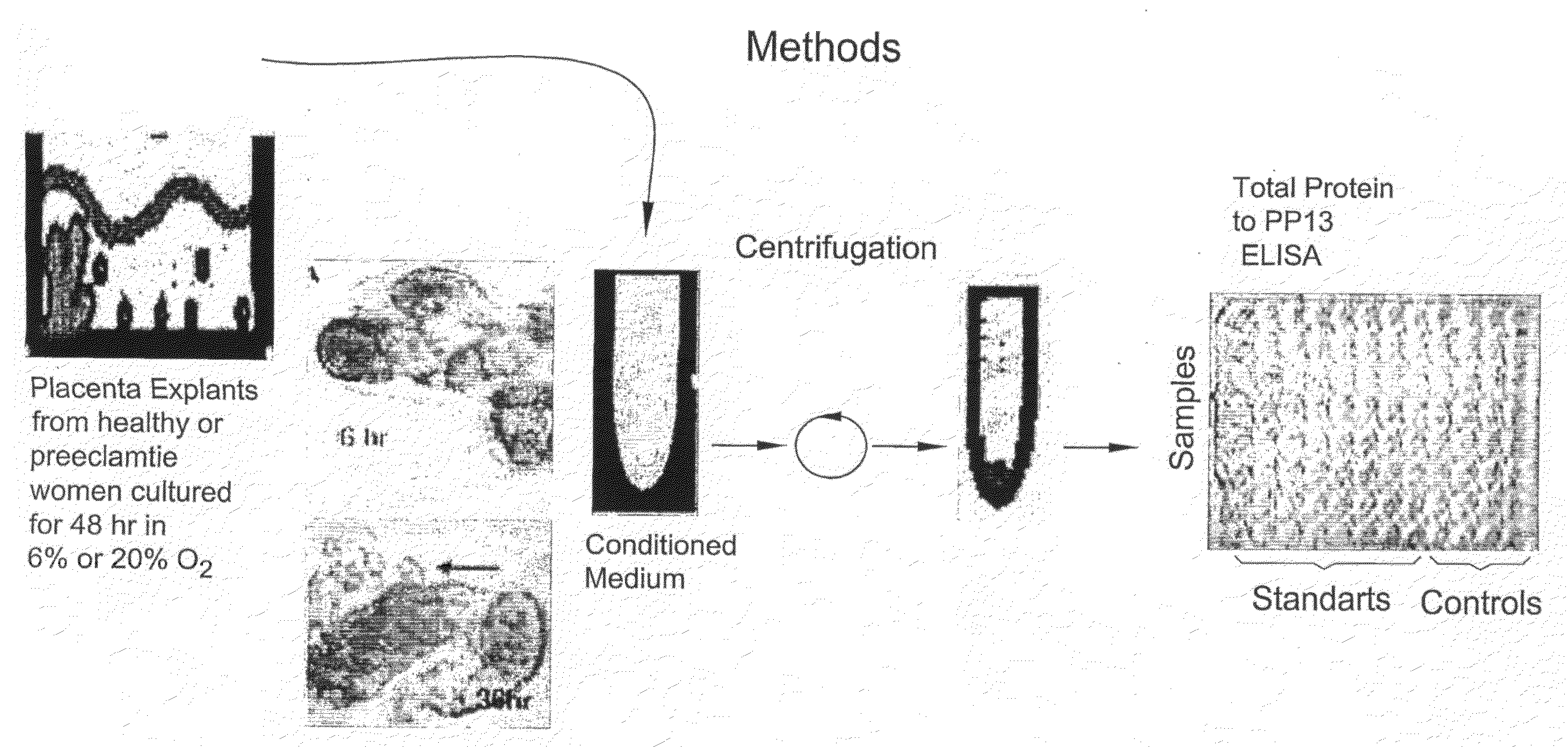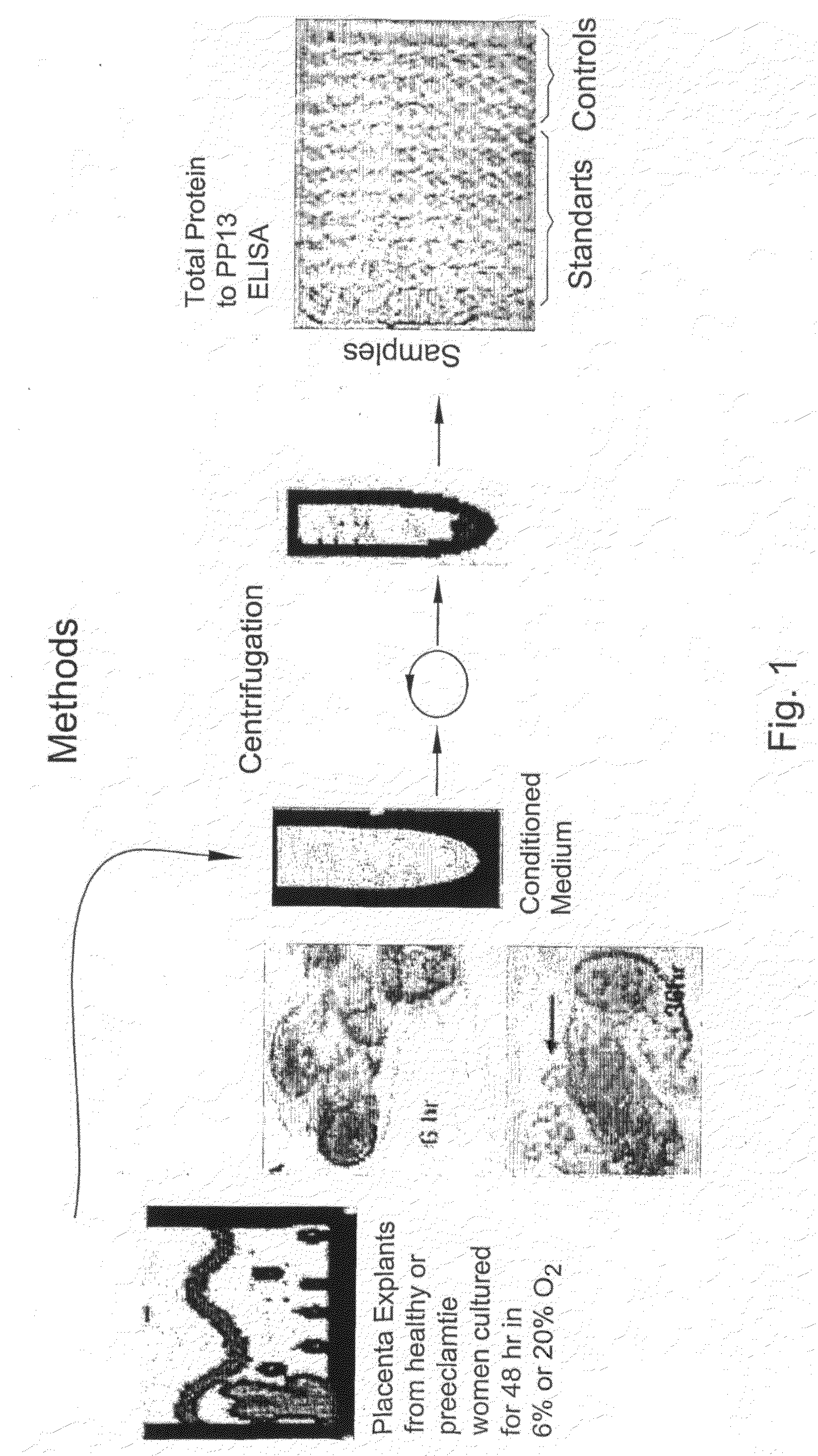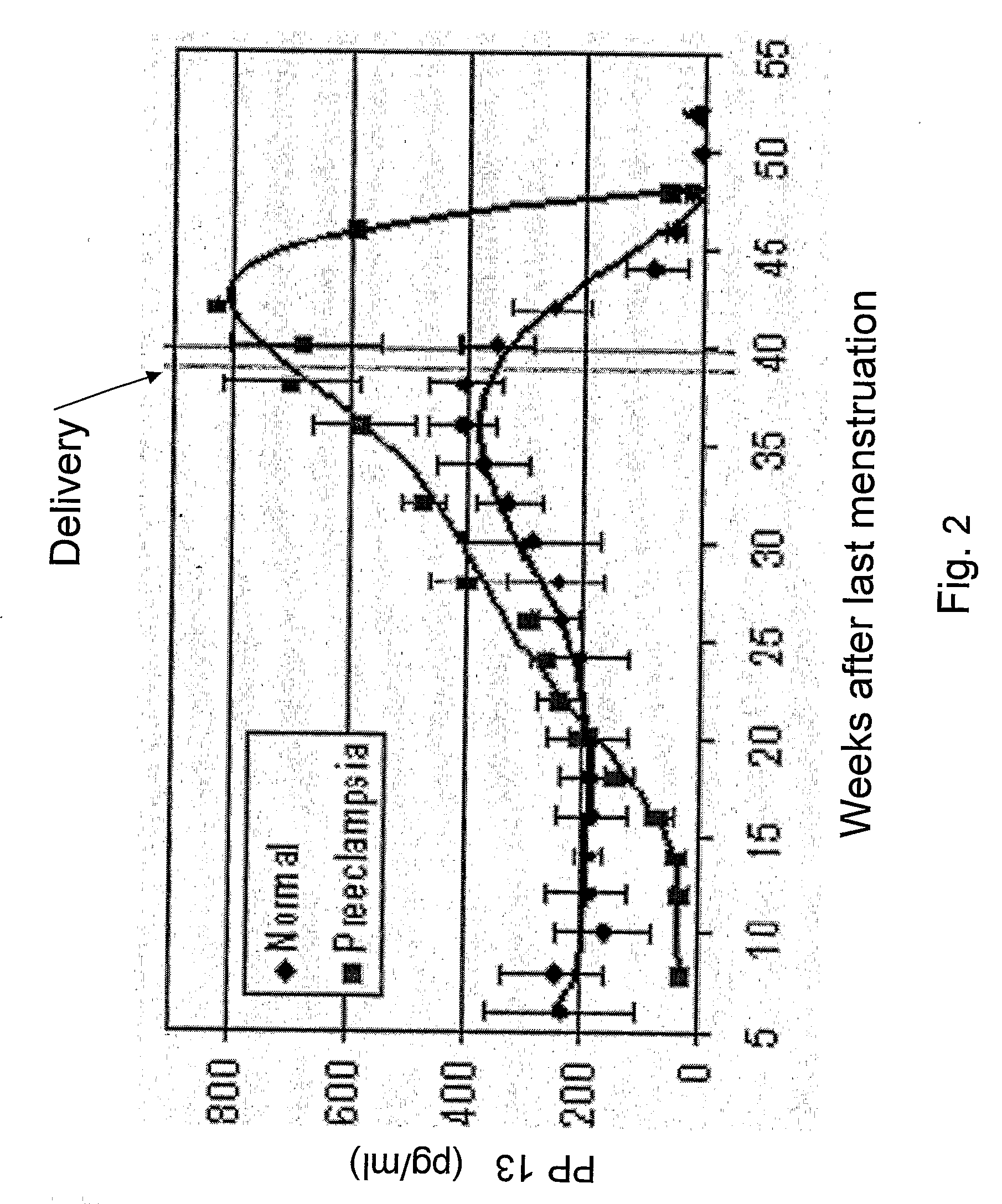Method for Determining the Effectiveness of a Treatment for Preeclampsia
a preeclampsia and treatment technology, applied in the field of preeclampsia treatment effectiveness determination, can solve the problems of longer recovery time, more complicated procedures, and more expensive than vaginal delivery, so as to reduce the risk of later development of preeclampsia, reduce the risk of preeclampsia, and reduce the risk of later developmen
- Summary
- Abstract
- Description
- Claims
- Application Information
AI Technical Summary
Benefits of technology
Problems solved by technology
Method used
Image
Examples
example 1
Assessment of the Effectiveness of Treatment by Low Dose Aspirin
[0092]If in the period specified above a medication is used, it is anticipated that it will bring a woman's PP13 level to the 2nd or 3rd or even the 4th quartile, corresponding to her reduced likelihood of developing preeclampsia. In the example described in Table 2, women with elevated risk to develop preeclampsia were orally treated from GW8 with a dose of 100 mg / kg aspirin (“low dose aspirin”) for either 2 or 3 weeks. It has been suggested that aspirin given early enough could reduce the risk of later development of preeclampsia. Accordingly, women who were treated were anticipated to have lower risk to develop preeclampsia and their outcome should also be improved.
[0093]In the study shown in Table 2, of 150 women tested as being at high risk in the 8th week, 50 were not treated, 50 were treated with aspirin for two weeks and 50 were treated for 3 weeks. The results showed that in the untreated group, most women rema...
example 2
Assessment of the Effectiveness of Treatment by Anti-Coagulant Drugs
[0096]Women were identified as being at elevated risk and were treated from the 8th week of gestation with anti-coagulants (low molecular weight heparin, aprotinin or others) given daily for 2 weeks. Their PP13 MoM was found to be elevated to 0.48 MoM (GW11-15) (P<0.05), and 0.73 (GW16-20), respectively, with the latter being practically indistinguishable from the normal level (1±0.29, Median normal MoM±95% Confidence Interval). PP13 MoM of women with normal risk was not affected. The corresponding outcome of the treated women was: with no treatment, all 5 women with elevated risk developed severe preeclampsia around term, whereas in the treated group one developed severe preeclampsia, one mild preeclampsia and one was unaffected.
example 3
Assessment of Drug Benefit Using Placental Extract
[0097]An alternate method of assessing drug benefit is by using placenta villi (cells or explants) obtained during gestation week 9-10 from pregnant women undergoing chorionic villi sampling. The placenta cells / explants were cultured for 48 hr and PP13 was measured in the culture medium by ELISA (in the same manner as described in FIG. 1). The results are shown in Table 3 below.
[0098]Table 3 shows that for the 3 cases of preeclampsia (cases #3, 4 and 5), the amount released under 6% oxygen (normoxia) is much lower (3,010, 3,500 and 6,300) as compared to 14,100 and 15,700 in normal women (cases #1 and 2). After 48 hours incubation with the anti-oxidant vitamin C, that has shown promise in treating high-risk women, the level of PP13 release is brought up almost to the normal level in all 3 high risk women, reaching 12,030, 9,230, and 15,790, respectively (i.e. 3-4 times higher). Under 20% oxygen (hyperoxia), PP13 release increased to 5...
PUM
| Property | Measurement | Unit |
|---|---|---|
| concentration | aaaaa | aaaaa |
| concentrations | aaaaa | aaaaa |
| recovery time | aaaaa | aaaaa |
Abstract
Description
Claims
Application Information
 Login to View More
Login to View More - R&D
- Intellectual Property
- Life Sciences
- Materials
- Tech Scout
- Unparalleled Data Quality
- Higher Quality Content
- 60% Fewer Hallucinations
Browse by: Latest US Patents, China's latest patents, Technical Efficacy Thesaurus, Application Domain, Technology Topic, Popular Technical Reports.
© 2025 PatSnap. All rights reserved.Legal|Privacy policy|Modern Slavery Act Transparency Statement|Sitemap|About US| Contact US: help@patsnap.com



